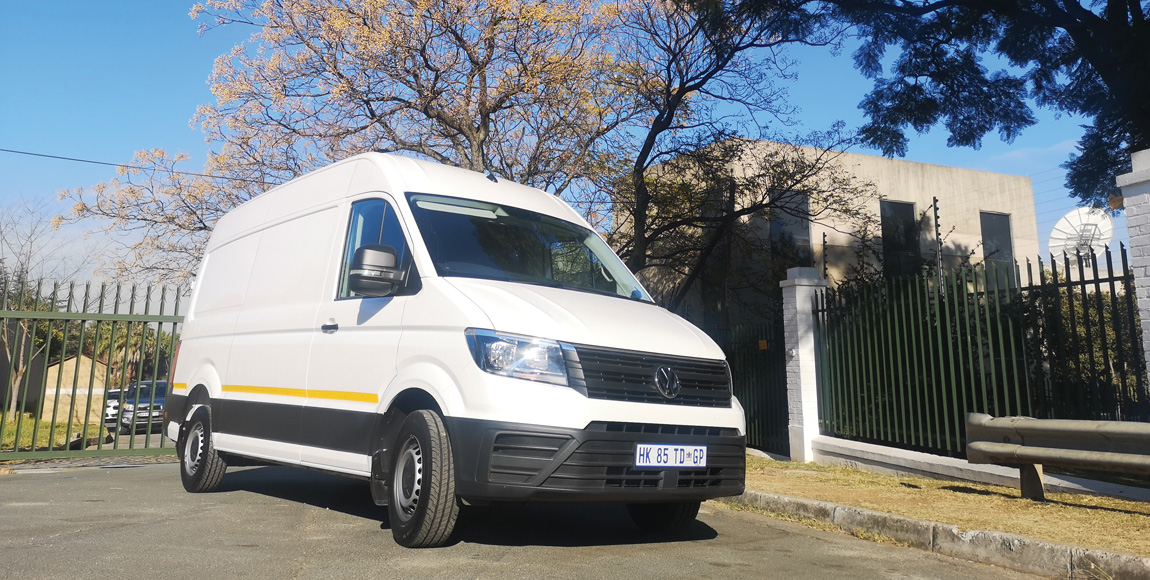Crafter: excellence personified!

The Volkswagen Crafter is fully imported from Wrzesnia, Poland, and, as CHARLEEN CLARKE discovers, it must be one of the country’s finest exports
My mates often feel sorry for me – especially those who spend their lives testing cars. Because I spend much of my life behind the wheel of a commercial vehicle, they either treat me like a weirdo (because I’m a woman and women don’t drive trucks, you know), or they treat me like orphan Annie – because they think their jobs are so much nicer than mine. Either way, I’m often treated with curiosity, pity or both.
These sentiments are wasted. I won’t bother to comment on the female thing; it’s simply too boring. However, I truly believe that my job is every bit as good as those of motoring scribes – because I get to drive some seriously awesome vehicles.
The latest Volkswagen Crafter is one such example. It is surprisingly good in all departments and it is more refined than some cars I’ve tested. I like the overall styling, too; while easy on the eye, it is more aerodynamic than its predecessor, meaning better fuel consumption and lower emissions (Volkswagen reckons that the 2,0-litre four-cylinder TDI engine will consume anything from 7,3 to 7,6 litres of diesel per 100 km).
The vehicle is a joy to drive; 103 kW of power and 340 Nm of torque are on tap, and I found this more than adequate, even when the van was loaded to the roof – and on the highway I never found it lacking. The motor is paired to a six-speed manual; unfortunately, Volkswagen’s superb auto is not available here.
What’s more special, though, are the levels of comfort and the superb handling. It really is as comfortable as a passenger car (and I’m not referring to some cheap and cheerful cars I’ve driven; the Crafter knocks them right out the park in this department).
The electro-mechanical steering (a first in this segment) made me feel as though I was driving a far smaller vehicle. Handling is predictable. While the van is surprisingly manoeuvrable and composed for its size; it never felt unsettled – even when I suddenly changed direction or braked hard (the brakes are superb, by the way).
The interior is as well put together as the average Volkswagen passenger car – meaning it is good. I was really impressed with the storage space; it’s virtually endless.
However, I was disappointed to see that my test van didn’t come with a radio and a USB port. Of course, these are optional extras, but, given the fact that a van driver will spend his life on the road, I think both of these features are absolutely essential (the radio will relieve boredom while the USB point is vital for charging various devices).
On a positive side, it does come standard with a side-wind compensation system, electric windows, central locking, Hill Hold Assist, Automatic Post-Collision Braking System and a steering wheel with height and telescoping adjustment. I found the Hill Hold especially handy when whizzing around mountainous Northcliff!
However, Hill Hold is not necessarily a top priority when buying a van – it’s all about cargo capacity! And I am pleased to report that the Crafter certainly doesn’t disappoint in this department. It offers up to 17,5 m³ of cargo space. This depends on the model chosen: front or rear-wheel drive, there are various lengths (5 986 mm, 6 836 mm, or, for the panel van, 7 391 mm) and also various heights (2 355 mm, 2 625 mm, or, for the panel van, 2 637 mm). I had a front-wheel drive derivative and the minimal sill height of 570 mm made loading exceptionally easy.
The Crafter is a truly terrific van. In fact, it was declared International Van of the Year back in 2017. And it’s not hard to figure out why…
Published by
Charleen Clarke
focusmagsa




